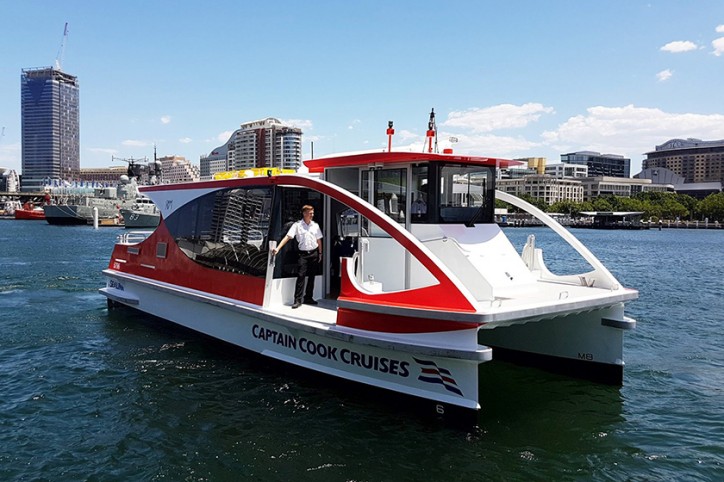Incat Crowther announced earlier today the launch of Cockle Bay and Blackwattle Bay. The pair of 12m ferries are the first vessels in a new class of small low impact ferries that respond to a need for transport to serve Sydney’s rapidly developing Bays Precinct.
Designed for low capital and operating cost, the vessels also generate extremely low wash. The size of the vessel was selected to perform the role of a water taxi, offering services on a more on-demand basis than can be performed by larger, traditional ferries.The vessel also features very low draft, and is capable of serving Bay Precinct areas previously overlooked by traditional ferry services.

The vessels will operated like a traditional bus service, with aan on-demand, hop-on, hop-off service. With the captain situated adjacent to the boarding areas, operational visibility is excellent and berthing is close at hand. Boarding and disembarkation of the vessels is fast and safe, with large doors and interior seats arranged in longitudinal rows through the cabin so as to not obstruct passenger flow.
The main cabin features 30 seats, with large sliding doors aft leading to an exterior space of 15 seats. In additional to the fixed seats, the vessels can accommodate 15 standing passengers.
Cabin ventilation is by specially designed and positioned dorade boxes that capitalize on cool sea air at water level. The reduced HVAC burden eliminates the need for a generator and keeps the vessel’s weight, fuel burn and cost to a minimum.
The vessels are fitted with a pair of Cummins QSB 6.7L main engines, driving Twin Disc gearboxes. With their optimized hull forms and efficient structures, Cockle Bay and Blackwattle Bay can operate at 18 knots with incredibly low fuel usage and are capable of a top speed of 24 knots.
Cockle Bay and Blackwattle Bay are further examples of Incat Crowther’s ability to work collaboratively with stakeholders to provide industry-leading solutions to unique operational challenges.
Source: Incat Crowther